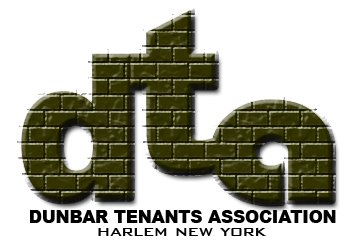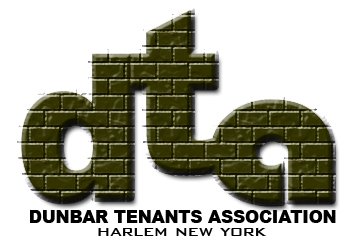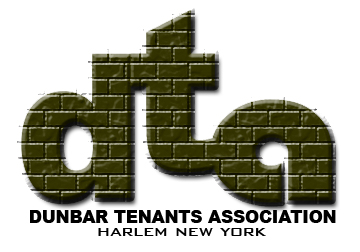For nearly a century, Harlem has been synonymous with black urban America. Given its magnetic and growing appeal to younger black professionals and its historic residential enclaves and cultural institutions, the neighborhood’s reputation as the capital of black America seems unlikely to change soon.

Ozier Muhammad/The New York Times
“I feel a community here that I don't feel in other parts of the city,” said Laura Murray, a student.
But the neighborhood is in the midst of a profound and accelerating shift. In greater Harlem, which runs river to river, and from East 96th Street and West 106th Street to West 155th Street, blacks are no longer a majority of the population — a shift that actually occurred a decade ago, but was largely overlooked.
By 2008, their share had declined to 4 in 10 residents. Since 2000, central Harlem’s population has grown more than in any other decade since the 1940s, to 126,000 from 109,000, but its black population — about 77,000 in central Harlem and about twice that in greater Harlem — is smaller than at any time since the 1920s.
In 2008, 22 percent of the white households in Harlem had moved to their present homes within the previous year. By comparison, only 7 percent of the black households had.
“It was a combination of location and affordability,” said Laura Murray, a 31-year-old graduate student in medical anthropology at Columbia, who moved to Sugar Hill near City College about a year ago. “I feel a community here that I don’t feel in other parts of the city.”
Change has been even more pronounced in the narrow north-south corridor defined as central Harlem, which planners roughly define as north of 110th Street between Fifth and St. Nicholas Avenues.
There, blacks account for 6 in 10 residents, but those born in the United States make up barely half of all residents. Since 2000, the proportion of whites living there has more than doubled, to more than one in 10 residents — the highest since the 1940s. The Hispanic population, which was concentrated in East Harlem, is now at an all-time high in central Harlem, up 27 percent since 2000.
Harlem, said Michael Henry Adams, a historian of the neighborhood and a resident, “is poised again at a point of pivotal transition.”
Harlem is hardly the only ethnic neighborhood to have metamorphosed because of inroads by housing pioneers seeking bargains and more space — Little Italy, for instance, has been largely gobbled up by immigrants expanding the boundaries of Chinatown and by creeping gentrification from SoHo. But Harlem has evolved uniquely.
Because so much of the community was devastated by demolition for urban renewal, arson and abandonment beginning in the 1960s, many newcomers have not so much dislodged existing residents as succeeded them. In the 1970s alone, the black population of central Harlem declined by more than 30 percent.
“This place was vacated,” said Howard Dodson, director of Harlem’s Schomburg Center for Research in Black Culture. “Gentrification is about displacement.”
Meanwhile, the influx of non-Hispanic whites has escalated. The 1990 census counted only 672 whites in central Harlem. By 2000, there were 2,200. The latest count, in 2008, recorded nearly 13,800.
“There’s a lot of new housing to allow people to come into the area without displacing people there,” said Joshua S. Bauchner, who moved to a Harlem town house in 2007 and is the only white member of Community Board 10 in central Harlem. “In Manhattan, there are only so many directions you can go. North to Harlem is one of the last options.”
In 1910, blacks constituted about 10 percent of central Harlem’s population. By 1930, the beginnings of the great migration from the South and the influx from downtown Manhattan neighborhoods where blacks were feeling less welcome transformed them into a 70 percent majority. Their share of the population (98 percent) and total numbers (233,000) peaked in 1950.
In 2008, according to the census, the 77,000 blacks in central Harlem amounted to 62 percent of the population.
The number of blacks living in greater Harlem hit a high of 341,000 in 1950, but their share of the population didn’t peak until 1970, when they made up 64 percent of the residents. In 2008, there were 153,000 blacks in greater Harlem, and they made up 41 percent of the population.
About 15 percent of Harlem’s black population is foreign-born, mostly from the Caribbean, with a growing number from Africa.
Some experts say the decline in the black population may be overstated because poorer people are typically undercounted by the census, and Harlem has a disproportionate number of poor people. Others warn that proposed development and higher property values may force poor people out, and they say that when the city was the neighborhood’s leading landlord it should have increased ownership opportunities for Harlem residents .
“Gentrification — the buying up and rehabilitation of land and buildings, whether by families or developers, occupied or abandoned — means a rising rent tide for all, leading inevitably to displacement next door, down the block, or two streets away,” said Neil Smith, director of the Center for Place, Culture and Politics at the City University of New York Graduate Center.
Mr. Dodson of the Schomburg Center moved from Riverside Drive to Newark not long ago. He said, “I tell people that I can’t afford to live in Harlem or in New York in the manner I deserve to.”
Other analysts point to the outflow of some blacks and the influx of others as positive evidence that barriers to integration have fallen in other neighborhoods and that Harlem has become a more attractive place to live.
“It’s a mistake to see this only as a story of racial change,” said Scott M. Stringer, the Manhattan borough president. “What’s interesting is that many African-Americans are living in Harlem by choice, not necessity.”
Andrew A. Beveridge, a sociologist at Queens College, said, “Harlem has become as it was in the early 1930s — a predominantly black neighborhood, but with other groups living there as well.”
Ronald Copney, a former limousine driver, and his two sisters share a brownstone on West 147th Street that his grandmother bought in 1929. He rents two floors to tenants, one of whom is white.
“This was always a very nice neighborhood,” he said. “In a way, it’s better now as far as property values are concerned.”
Geneva Bain, the district manager of Community Board 10, blamed the economy and the lack of jobs for the dwindling number of blacks.
She acknowledged, though, that white newcomers have sometimes been greeted ambivalently. “Integration is very subjective,” Ms. Bain said. “One person’s fellowship is another person’s antagonism. I am one who thinks that central Harlem has become a better place because of integration.”
Mr. Dodson, the Schomburg Center director, said one source of historic resentment remained: that blacks still accounted for a tiny minority of the area’s property owners.
“There are people who would like to maintain Harlem as a ‘black enclave,’ but the only way to do that is to own it,” Mr. Dodson said. “That having been said, you can’t have it both ways: You can’t on the one hand say you oppose being discriminated against by others who prevent you from living where you want to, and say out of the other side of your mouth that nobody but black people can live in Harlem.”
“The question of whether it’s a good thing or not,” he added. “I honestly can’t make that judgment yet.”
http://www.nytimes.com/2010/01/06/nyregion/06harlem.html?_r=1&em=&pagewanted=all




